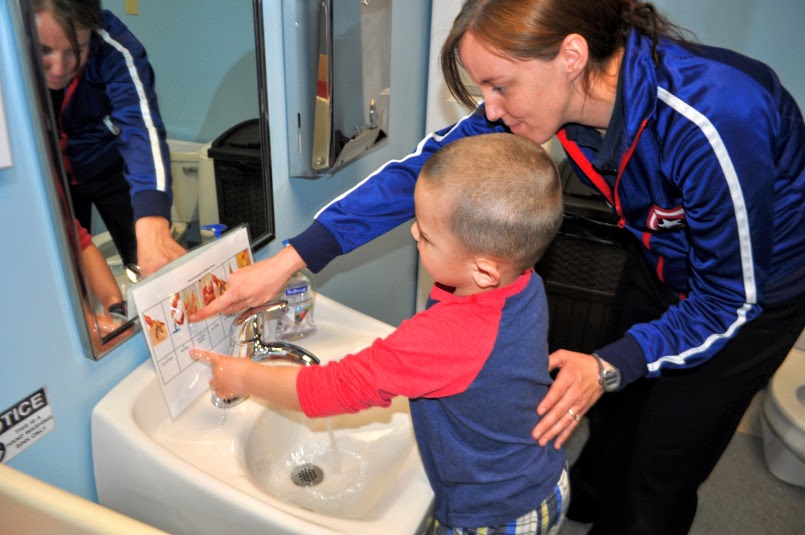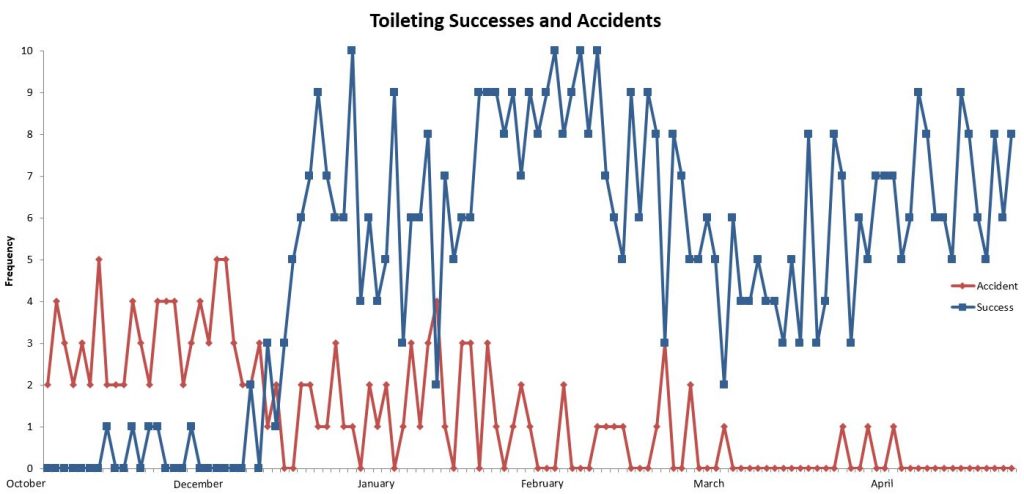
Nearly all of the children entering into the Initial Steps Day Treatment Program have not yet mastered toilet training. Thus, one of the goals of this program for all our children is to achieve successful toileting practices. To accomplish this goal, the Knapp Center use methods of ABA to teach our children how to successfully void in a toilet.
What research support is there for ABA methods being effective in toileting training children with autism?
At the Knapp Center for Childhood Development, we base our interventions on methods that are supported by research. ABA has been supported in research for multiple decades as a leading intervention in the treatment of autism spectrum disorders. The same is true when utilizing ABA methods to toilet train a child with ASD. Research has documented the effectiveness of using ABA to toilet train children with autism since the early 1970s.
Using Methods of Applied Behavior Analysis for Toilet Training
Toilet training using the principles of Applied Behavior Analysis (ABA) involves the use of positive reinforcement procedures to increase the frequency that a child will sit on the toilet and release or void in the toilet, while decreasing the number of accidents. At the Knapp Center for Childhood Development, we also use and follow a task analysis program to ensure systematic implementation of the toileting program. When everyone working with the child is consistent in using the same procedures, toileting training occurs more quickly!

The age at which children reach toilet-training readiness milestones, varies; however, children diagnosed with ASD oftentimes have more difficulty in the toilet training process. The graph above depicts the total number of toileting accidents and successes per day, for a young child diagnosed on the autism spectrum. At the start of the toilet training program, this child was having upwards of 5 toileting accidents per day with no successful voids on the toilet. As the number of successful voids increased when the toilet training was implemented, the number of accidents subsequently decreased, resulting in successful toilet training for this child.
